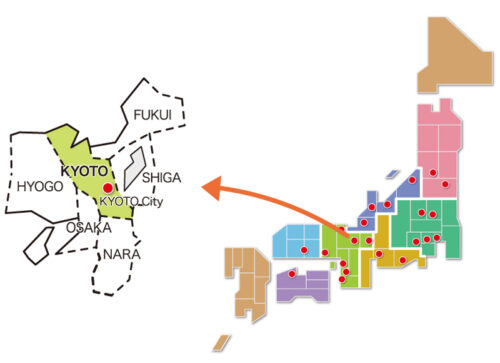The Onin War and the hand-drawn Yuzen
refers to the area of northwest Kyoto City and is a registered trademark of the Nishijin Textile Industrial Association. Legend has it that after the Onin War (1467-1477), which divided Japan into halves, textile craftsmen having fled here and there restarted their weaving work in the western army encampment, led by Sozen Yamana. (Nishi-jin: encampment of the western army). The textile industry in Kyoto started earlier, following the transfer of the capital to Heian-kyo (from Nara to present-day Kyoto) in 794, when an office to manage the textiles for the court known as ‘Oribe no tsukasa’ was founded and craftsmen were encouraged to manufacture high-class textiles, including yarn-dyed figured fabrics such as ‘tsuzure’ (figured brocade), ‘tate (warp) nishiki’, ‘donsu’ (damask) and what would become an array of sophisticated techniques: design patterns, twisted yarns, yarn-dyeing, preparing machines, weaving and finishing, covering abundant textile regions throughout Japan.
In the Kyoto textile region, hand-drawn Yuzen began during the Edo Period
(1603-1868) with dyeing techniques that were nurtured to create: hand-drawn Yuzen; applying designs to a fabric and ‘Katagami Yuzen’ (Yuzen-printed silk using cut paper patterns), which won them added popularity. Kyoto has since further developed as a textile region with hand and machine printing.

